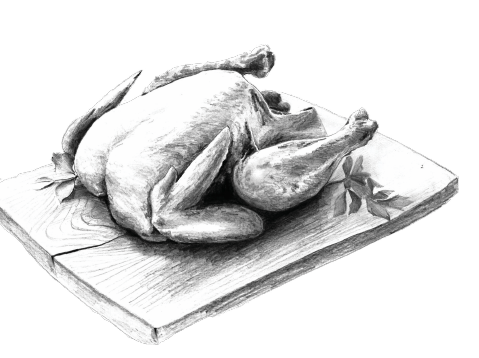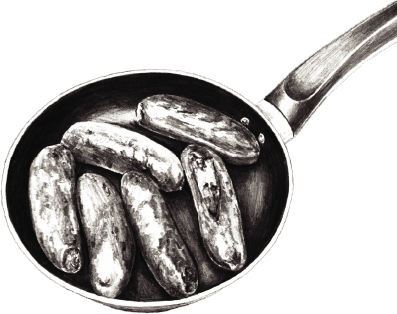
Professor Charles Spence is a world-famous experimental psychologist with a specialization in neuroscience-inspired multisensory design. He has worked with many of the world’s largest companies across the globe since establishing the Crossmodal Research Laboratory (CRL) at the Department of Experimental Psychology, Oxford University in 1997. His new book Sensehacking, published by Viking Penguin has just been released.
Jean Anthelme Brillat-Savarin would undoubtedly have had an aphorism to describe the fact that we eat not just to fulfil our nutritional needs, but also (mostly) to meet our social and emotional needs. Everyone, after all, has their own comfort foods. I recently took a look at the different foods that people around the world class as comfort foods to see if there was anything common amongst them. However, it seems that while the stereotype of women turning to ice-cream and chocolate has more than a grain of truth to it, men, by contrast, tend to consider warm savoury foods as more comforting. In one US study, for example, macaroni and cheese came out at the top of the list of young men’s preferred comfort foods.[1] The research suggests that we tend to be drawn toward comfort foods at those times when we feel ourselves to be emotionally threatened.
During the ongoing pandemic, sales of nostalgic foods/brands have been on the rise. My suspicion is that when the world looks like a dangerous and uncertain place, we tend to gravitate toward familiar foods and nostalgia brands that help to remind us of happier times, again feeding our sense of emotional well-being, as much as our hunger/stomach. Certainly, my sense is that those restaurants specializing in molecular/modernist cuisine[2] are going to struggle more than most to survive this pandemic, as whatever neophilia diners may have expressed via their food choices when times were good is likely going to be replaced by neophobia, given the increasingly uncertain world situation.
Intriguingly, with sales of Smash, Trifle, Custard, and Angel Delight in the ascendant (at least here in the UK),[3] it would seem that many of us are also gravitating more towards those foods that are less texturally-challenging. I would certainly not be surprised to find our tastes shifting toward the sweeter end of the spectrum. This, along with a documented increase in home baking, at least during the first wave of lockdowns, again hinting at food’s role beyond merely fulfilling our physiological/nutritional needs.
What we think about what we eat nearly always relies on memory, be it explicit or implicit, for what we have eaten before. Consider only the Proustian moment: This, the famous literary occasion when the smell of a ‘petites madeleine’ (a sponge-cake-cum-biscuit) being dunked into a cup of linden tea provided such a powerful trigger of memory for Proust’s character.[4]
However, my sense is that very often our decision to eat out has more to do with socializing than with anything else. As such, the various lockdowns that have been unleashed on society during the present pandemic have meant that more of us than ever before are eating more of our meals alone at home than ever before. Given how important shared mealtimes, be it in the home or when dining out, are in terms of fostering and maintaining our social relations, we should not be surprised by the increasing mental and physical health problems associated with eating alone. Worryingly, sales of alcohol have also increased during the various lockdowns, as people turn to drink to try to help relieve their stress.
Shared mealtimes undoubtedly play a fundamental role in helping to maintain our social, emotional, and physical well-being.[5] As such, we should all be doing whatever we can to help ensure that those whom we care about the most, and who may be socially isolated (as is the case for many older individuals) are not left to eat alone. While physically sharing a meal is undoubtedly the best solution, digital commensality, that is, sharing meals and other social occasions online (think only of Zoom cocktails) can nevertheless still provide some element of emotional support to see us through this current crisis.[6]
[1] Spence, C. (2017). Comfort food: A review. International Journal of Gastronomy and Food Science, 9, 105-109.
[2] Spence, C., & Youssef, J. (2018). Assessing the long-term impact of the molecular gastronomy movement on haute cuisine. International Journal of Gastronomy & Food Science, 14, 35-44.
[4] Van Campen, C. (2014). The Proust effect: The senses as doorways to lost memories. Oxford, UK: Oxford University Press.
[5] Spence, C., Mancini, M., & Huisman, G. (2019). Digital commensality: On the pros and cons of eating and drinking with technology. Frontiers in Psychology, 10:2252. doi: 10.3389/fpsyg.2019.02252.
[6] Spence, C. (2020). Sensehacking: Maintaining a balanced diet of multisensory stimulation during COVID-19 lockdown, and why it matters. Tangible Territory Journal, 1 (Autumn). https://tangibleterritory.art/journal/issue1/.
As part of our ‘A Taste of Christmas’ campaign, which aims to provide festive menu solutions to foodservice businesses throughout the country, we caught up with Barry O’Flaherty, experienced Chef and William’s Gate Protein Specialist, to find out his thoughts and insights on the upcoming Christmas rush… Tell us a little bit about your current…
Pumpkin Spice Latte Ingredients:15ml Pumpkin Spice Syrup150ml Steamed MilkEspresso ShotWhipped CreamCinnamon Dusting Method: Extract the shot of espresso into the cup and add the Pumpkin spice syrup.Top with steamed and textured milk.Finish with whipped cream and cinnamon dusting. Pumpkin Spice Highball Ingredients:35ml Whiskey10ml Pumpkin Spice100ml Ginger AleIceLime Wedges Method:Pour Pumpkin syrup into a glass. Add the…
Plant Based Chocolate Ganache Ice Cream (IQFA Foodservice Product of the Year) Our chocolate ganache is inspired by a small family run gelatoria in Florence, Italy. Using 64.5% couverture dark chocolate which provides a beautiful balance of bitter and sweet with a mild cocoa flavour, we paired this with alkalised 22% fat cocoa powder. Once…
Ingredients 676945 Delifrance Pre-Sliced Ciabatta 696767 William’s Gate Exclusive Beef Striploin Roast Approx. 6-7kg 703609 Follain Onion Marmalade 529545 Blenders Real Mayo 705550 Rocket Leaves 638088 White Grated Cheddar 663396 Chef’s Kitchen Salt 684697 Chef’s Kitchen Cracked Black Pepper 501981 Basso Extra Virgin Olive Oil Method For the Beef:Remove beef from the fridge 1 hour…
Sign up to receive our latest news

